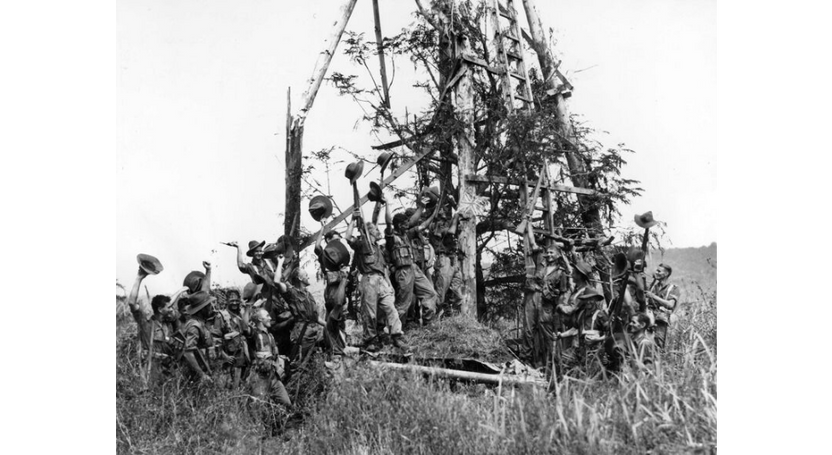THE CAPTURE OF WEWAK REMEMBERED 75 YEARS ON
Posted by MS Shop on 15th May 2020
Media Release: Office of the Hon. Darren Chester, Canberra ACT. 15 May 2020
15 May 2020, marks the 75th anniversary of the conclusion of operations at Wewak, the scene of the final Australian campaign on mainland New Guinea during the Second World War.
Minister for Veterans’ Affairs Darren Chester said that in October 1944, Australian soldiers took over from United States troops stationed at Aitape, a small town 150 kilometres west of Wewak.
“Australian soldiers were tasked with mounting an offensive to cut off the Japanese in the area from resupply points along the coast and force them inland where, without supplies and reinforcements, they would be weakened as a military force,” Mr Chester said.
“The Australians first went east along the coast to the south of the Torrecilli mountain range and by late March 1945, had advanced to Dagua within 40 kilometres of Wewak which saw some of the heaviest fighting of the campaign.
“The campaign came to a head when the Australians launched an amphibious assault, combined with an infantry advance along the coast from the west, capturing Wewak Point on 10 May 1945 and by 15 May 1945 Wewak and the surrounding coastal area was in Australian hands.”
The capture of Wewak was the culmination of seven months of hard work, fought over difficult jungle terrain. It forced the Japanese to withdraw inland and break-up into smaller groups, though with some 35,000 soldiers still present, fighting continued until the war ended in August.

Due to the emphasis placed on cooperation with Britain, relatively few Australian military units were stationed in Australia and the Asia-Pacific Region after 1940. Measures were taken to improve Australia's defences as war with Japan loomed in 1941, but these proved inadequate. In December 1941 the Australian Army in the Pacific comprised the 8th Division, most of which was stationed in Malaya, and eight partially trained and equipped divisions in Australia, including the 1st Armoured Division. The RAAF was equipped with 373 aircraft, most of which were obsolete trainers, and the RAN had three cruisers and two destroyers in Australian waters. In 1942 the Australian military was reinforced by units recalled from the Middle East and an expansion of the CMF and RAAF. United States Military units also arrived in Australia in great numbers before being deployed to New Guinea. The Allies moved on to the offensive in late 1942, with the pace of advance accelerating in 1943. From 1944 the Australian military was mainly relegated to subsidiary roles, but continued to conduct large-scale operations until the end of the war. 20mm 3D antique brass lapel badge
“Over the course of the campaign to capture Wewak, 440 Australian service personnel died, while another 1100 were wounded. Some 9000 Japanese troops lost their lives,” Mr Chester said.
“On this anniversary, we remember those who fought in the Battle of Wewak 75 years ago and I encourage all Australians to pause and reflect on their service and sacrifice.”
This year on 15 August we will mark the 75th anniversary of Victory in the Pacific, the day remembered for the end of the Second World War. We will remember the some 39,000 service men and women who died fighting to protect Australia and its allies and the almost one million Australians who served in this conflict which spanned more than half a decade.
Open Arms — Veterans & Families Counselling provides free and confidential support for current and ex-serving ADF
personnel and their families. Help is available 24/7 on 1800 011 046 (international: +61 1800 011 046 or +61 8 8241 4546)
or visit www.OpenArms.gov.au
Main Image: Argus Newspaper Collection of Photographs, State Library of Victoria.








